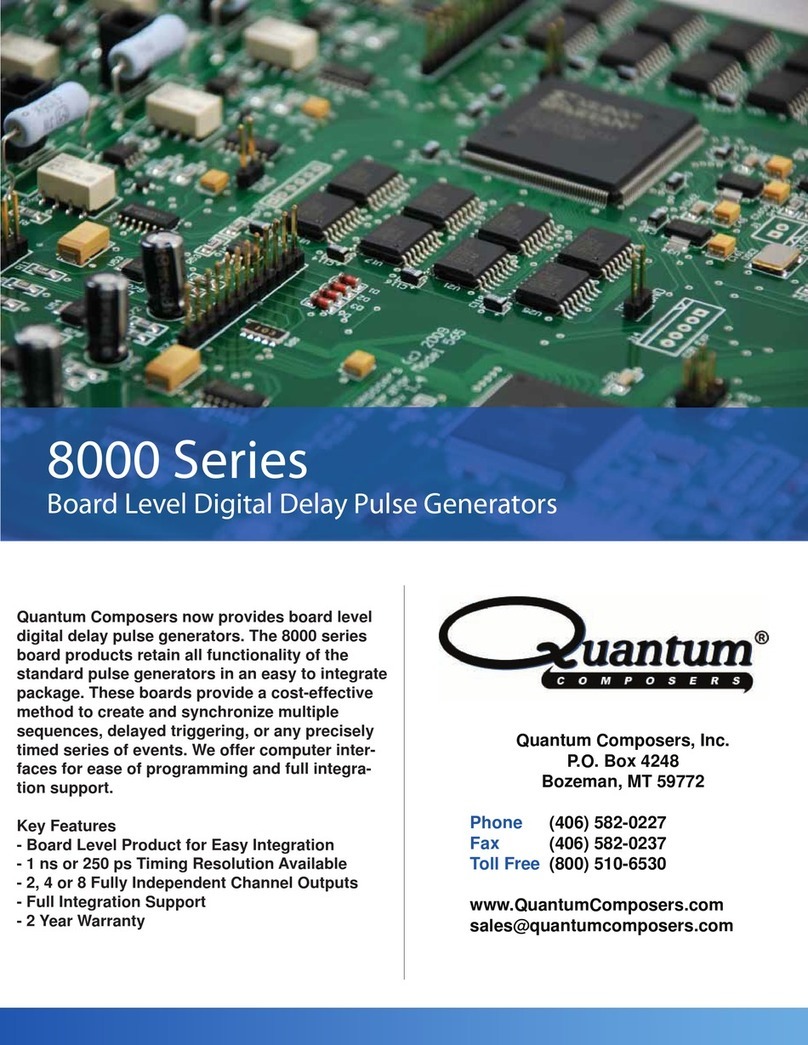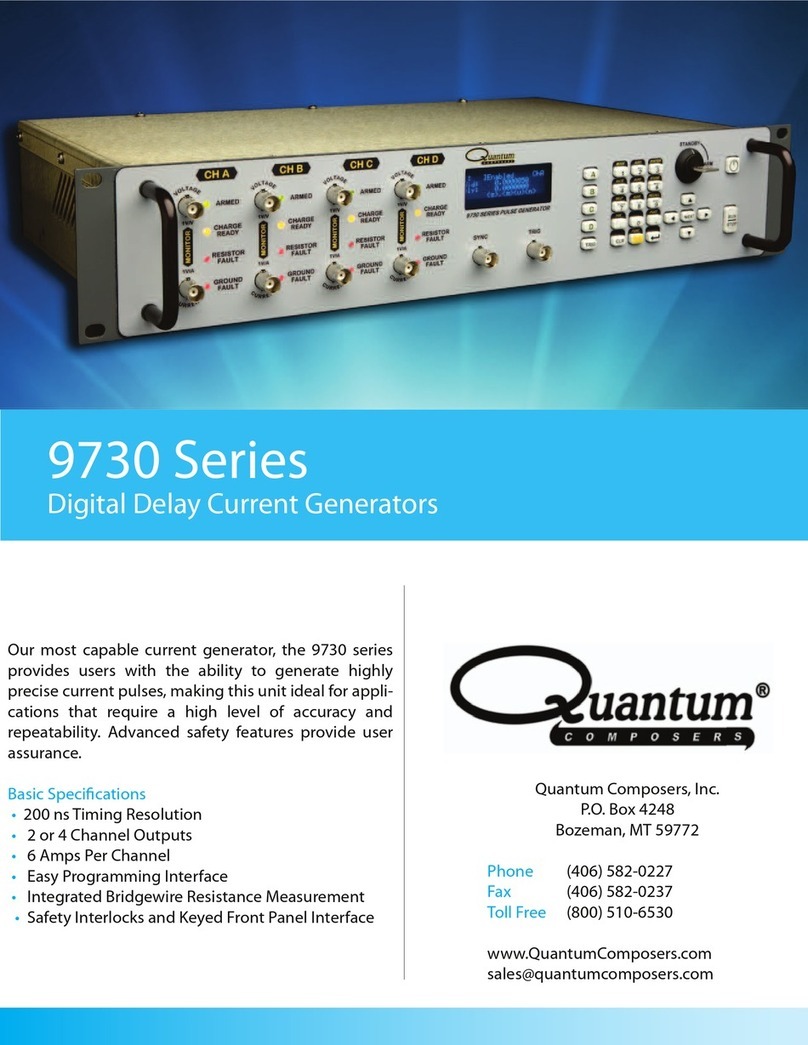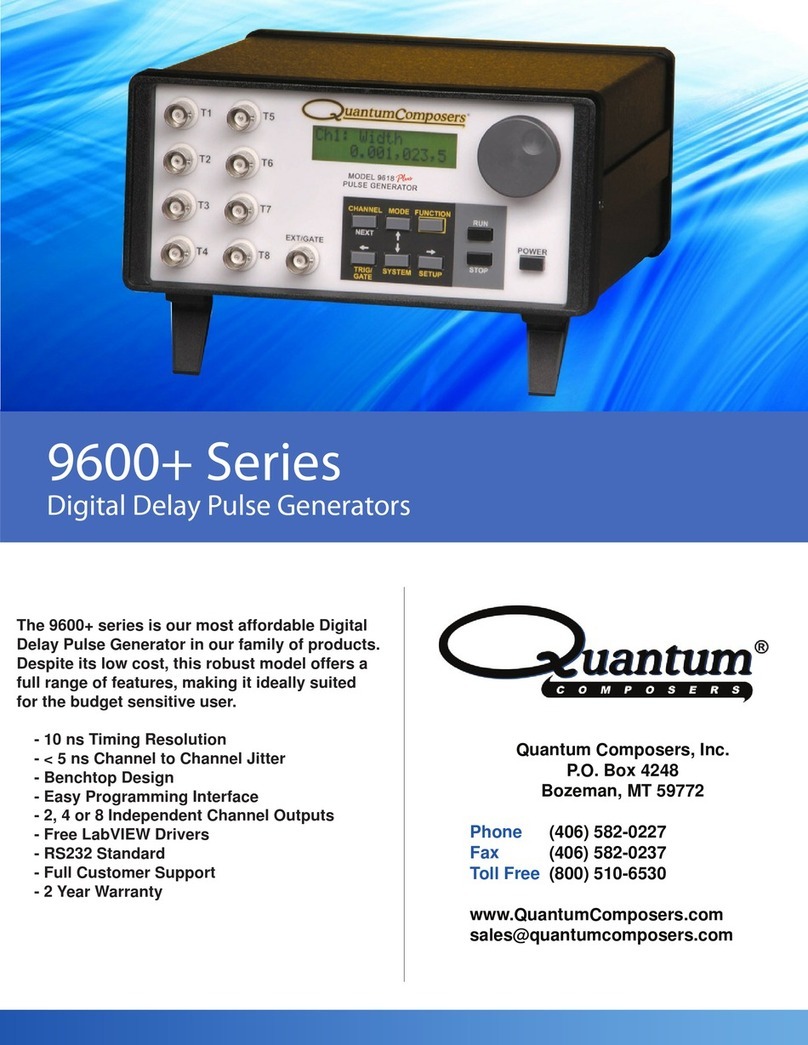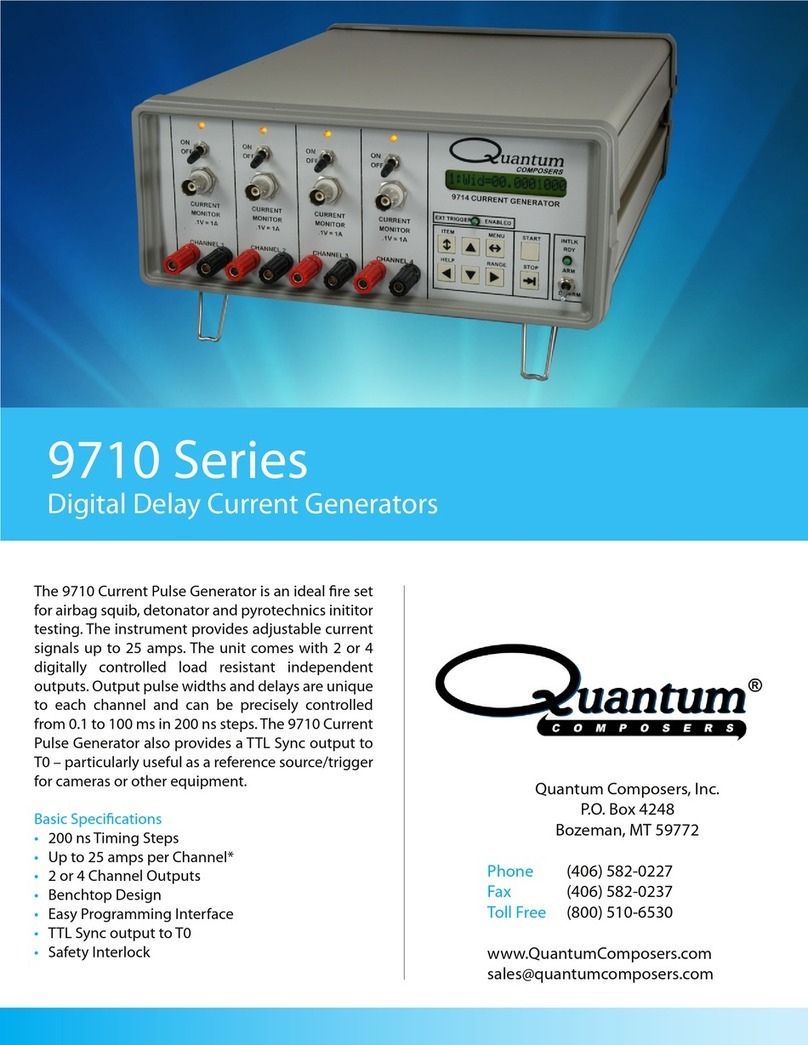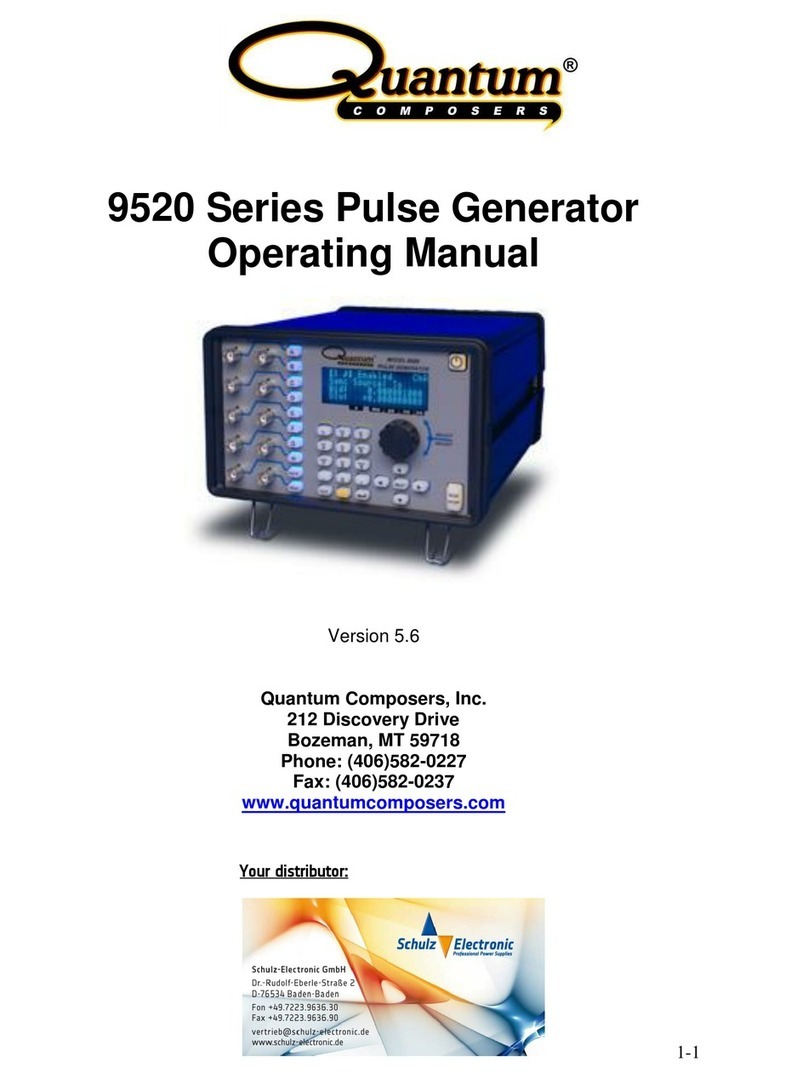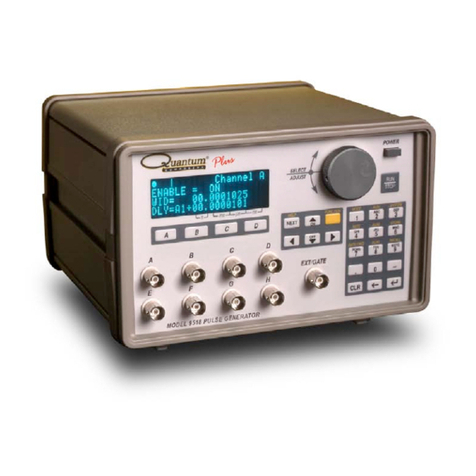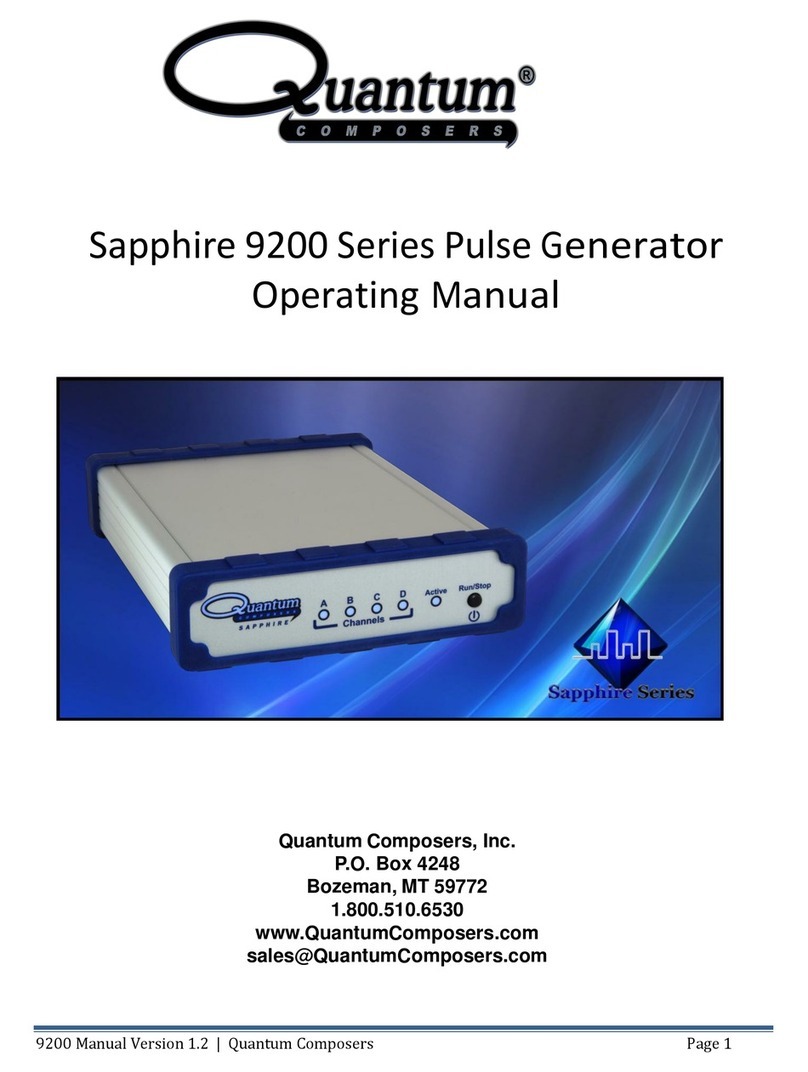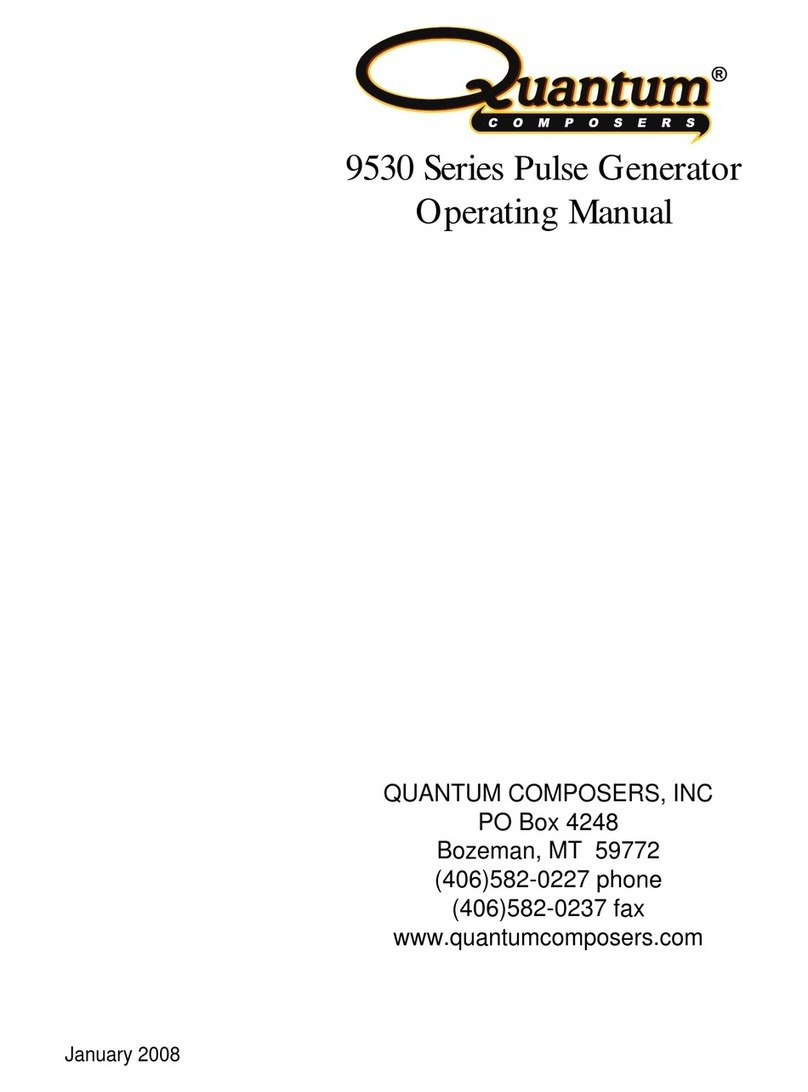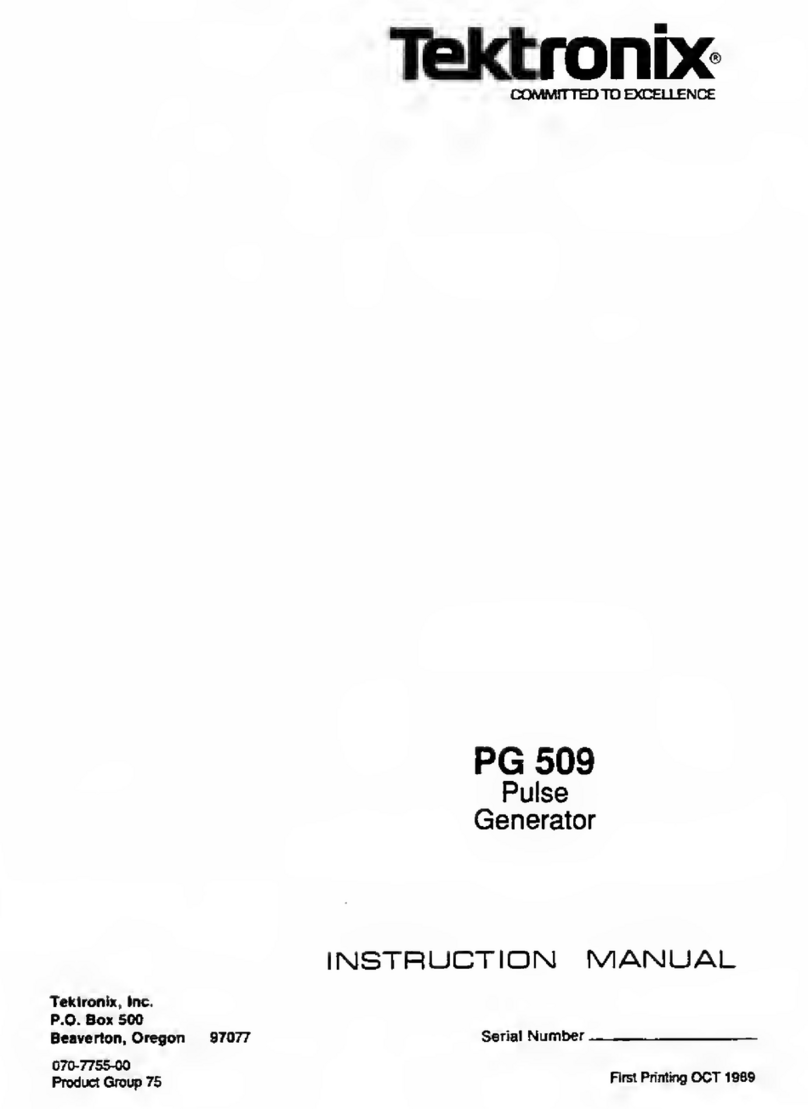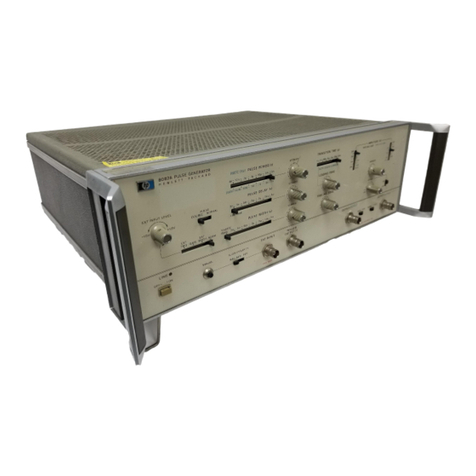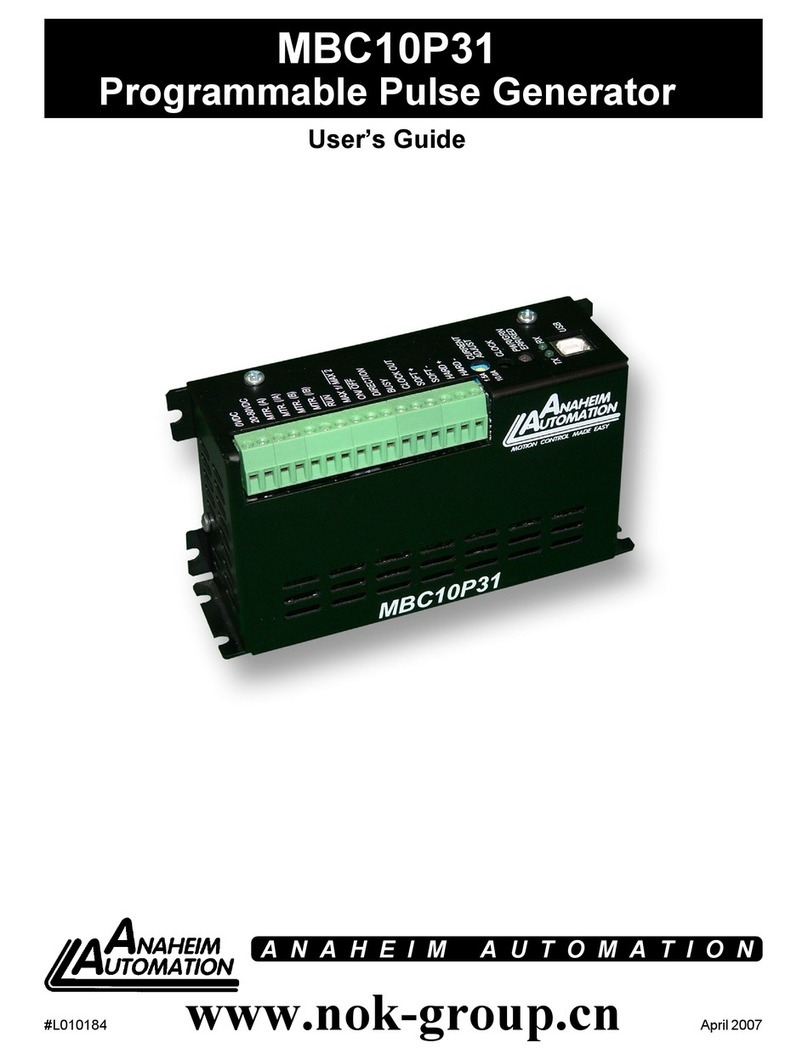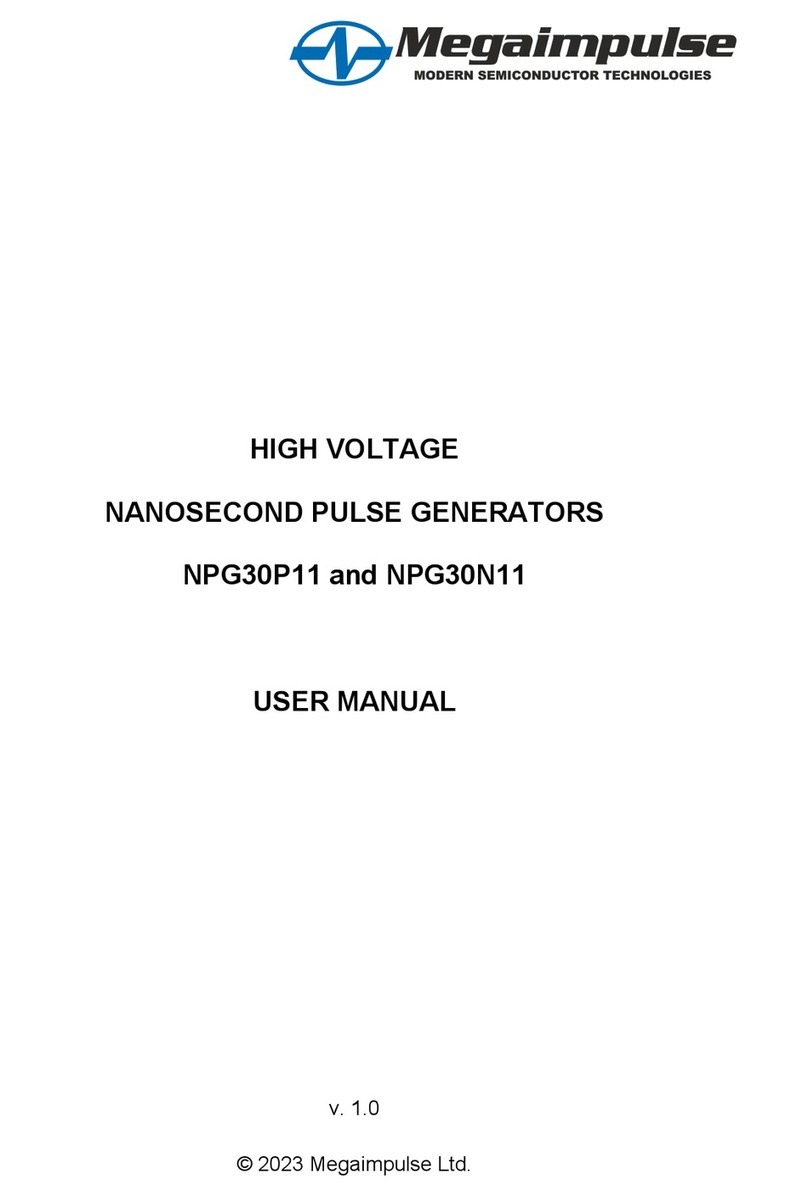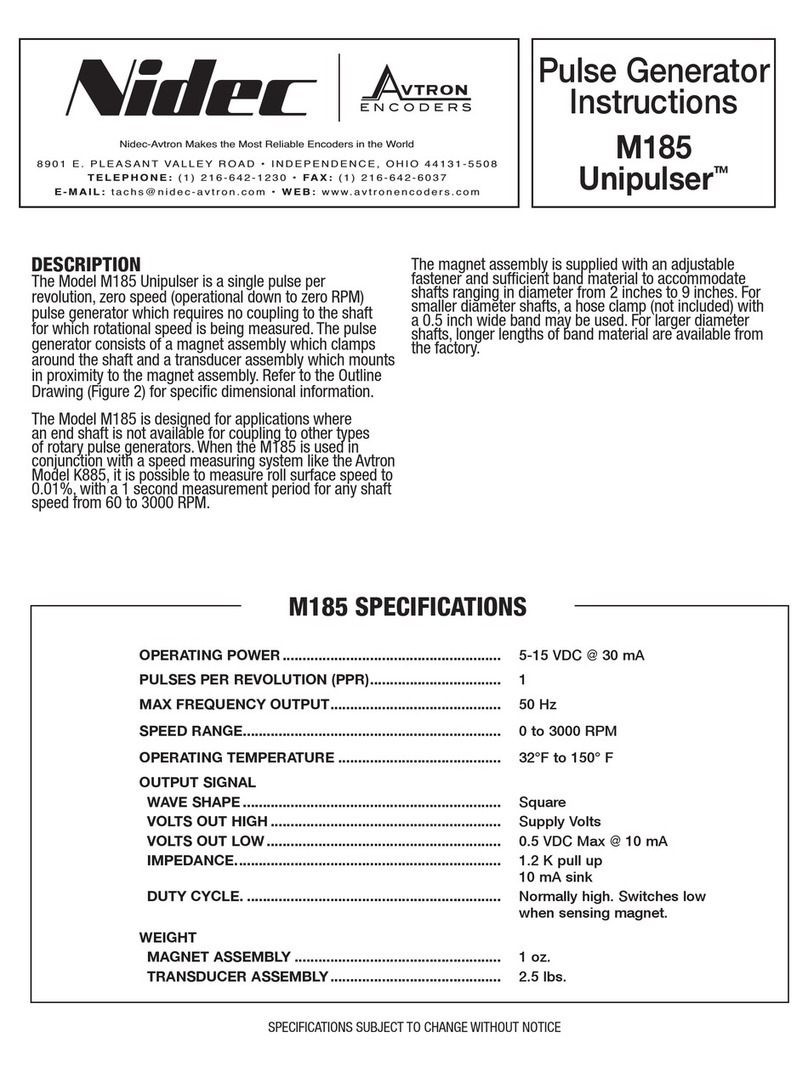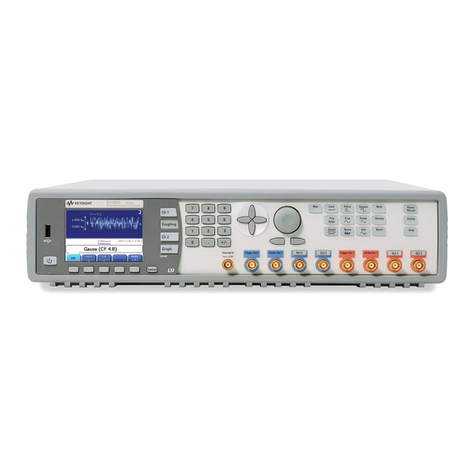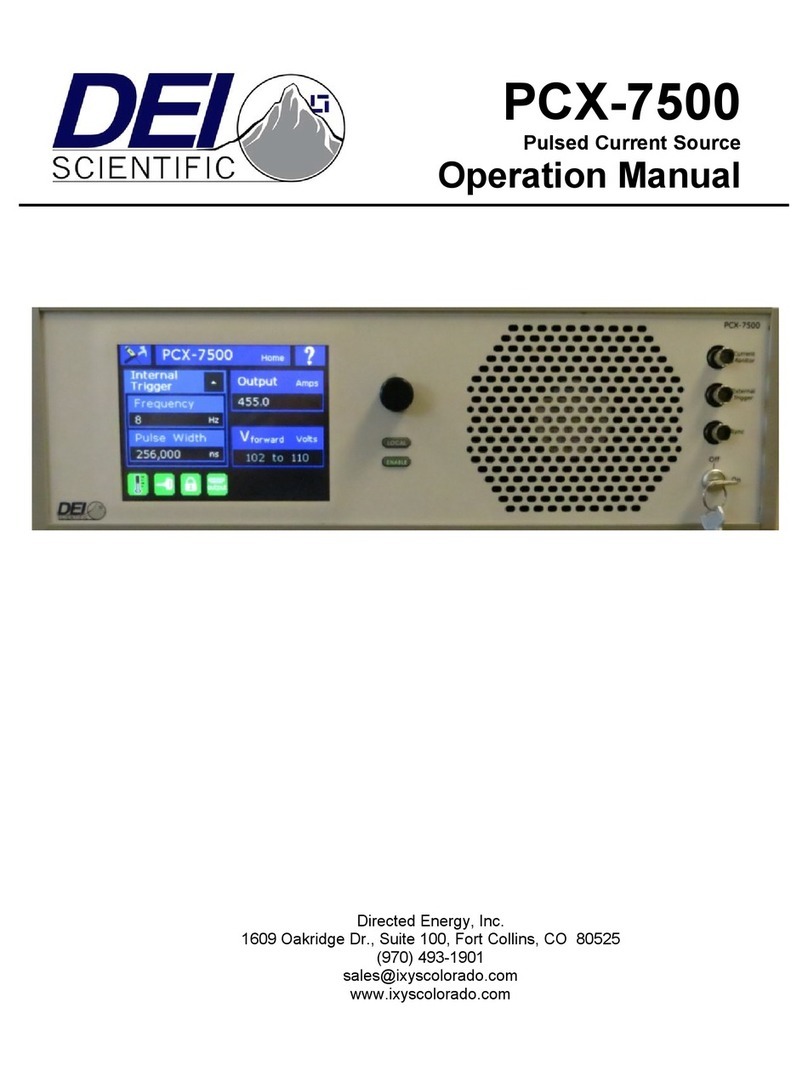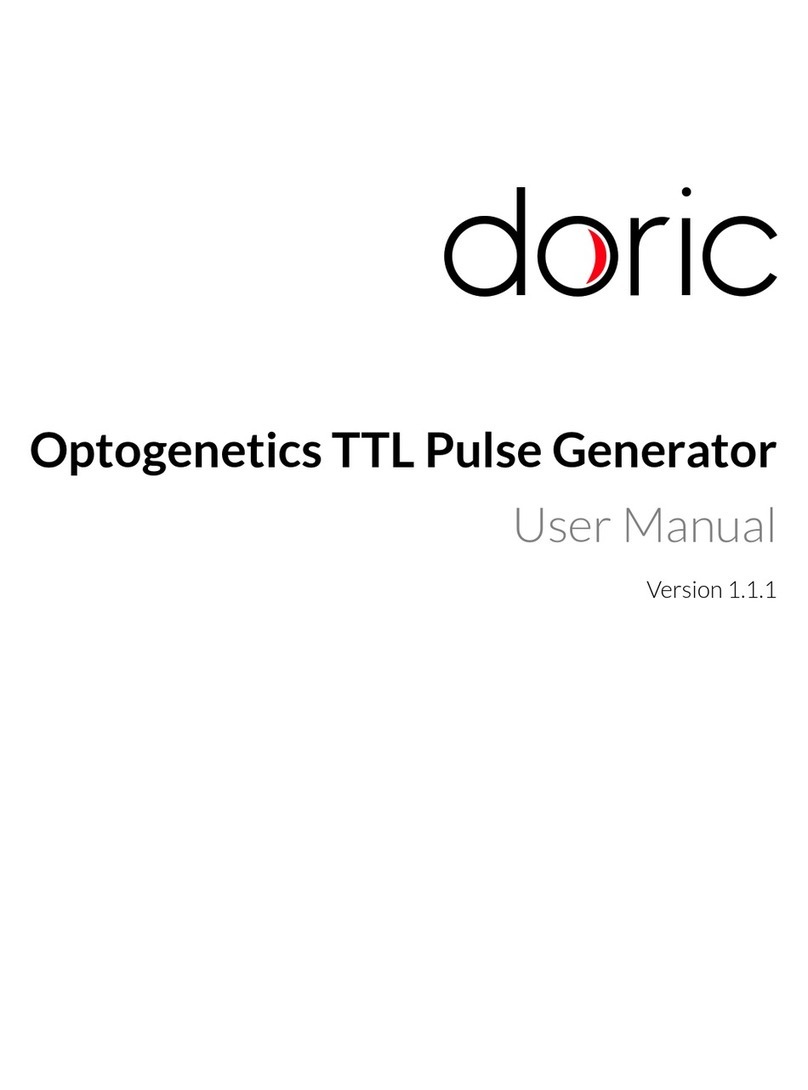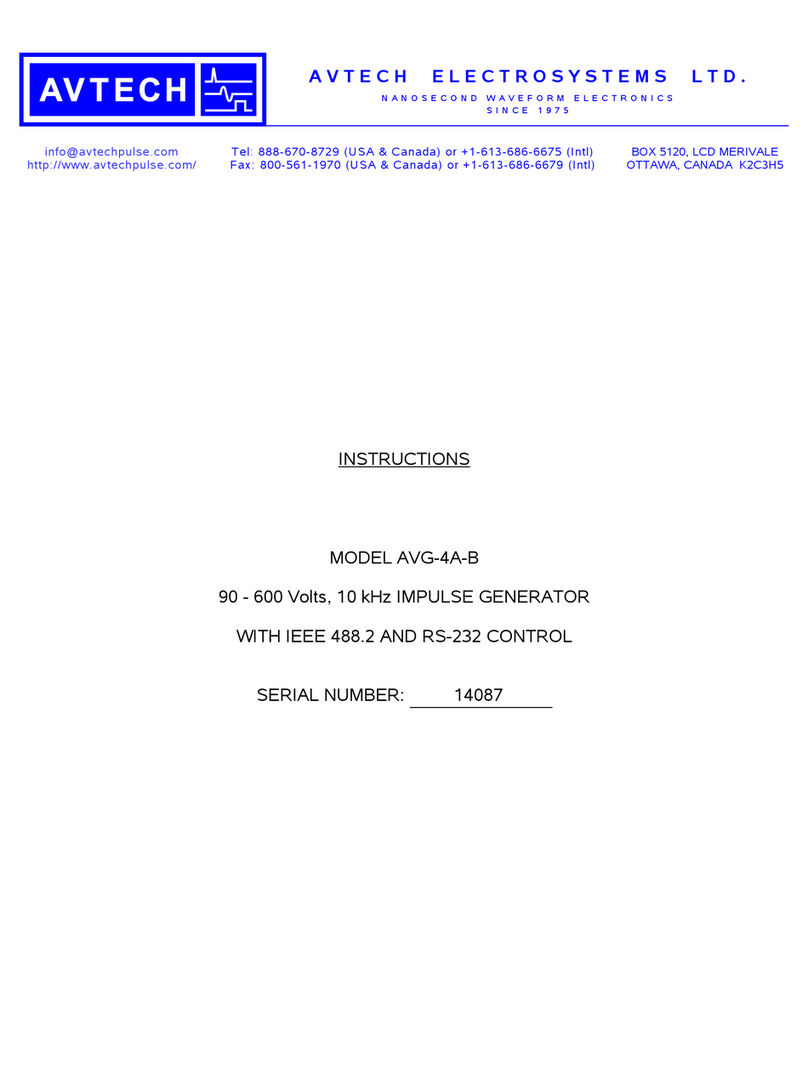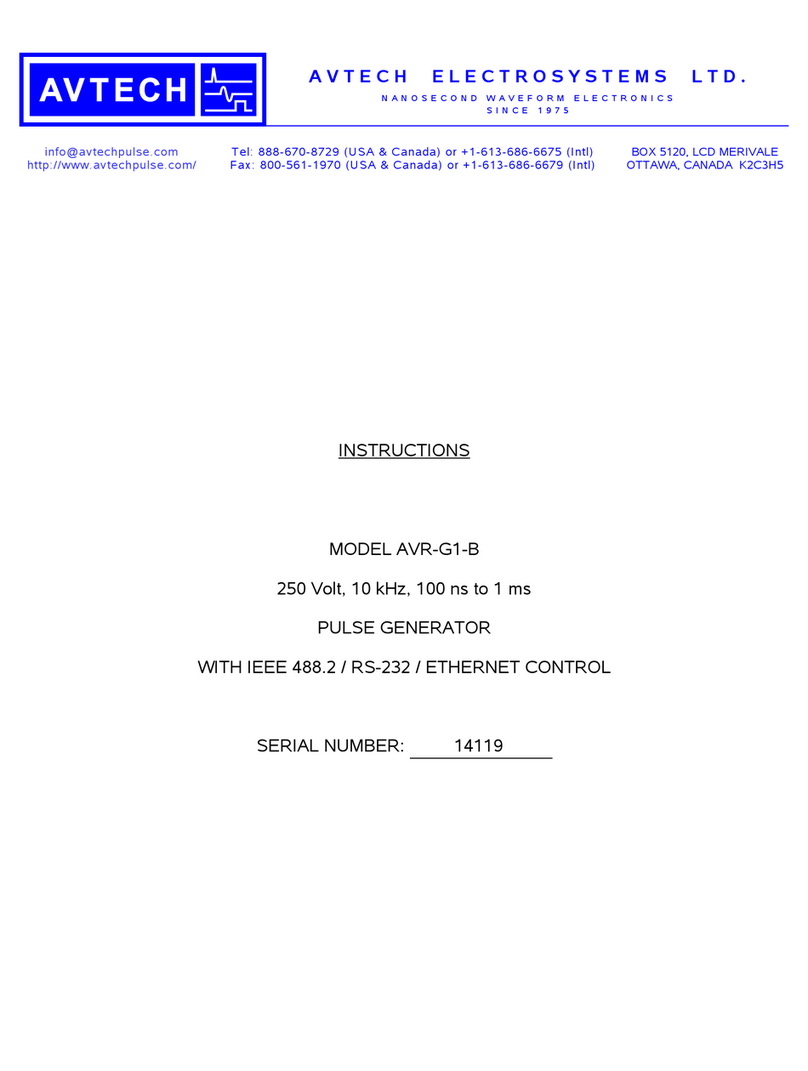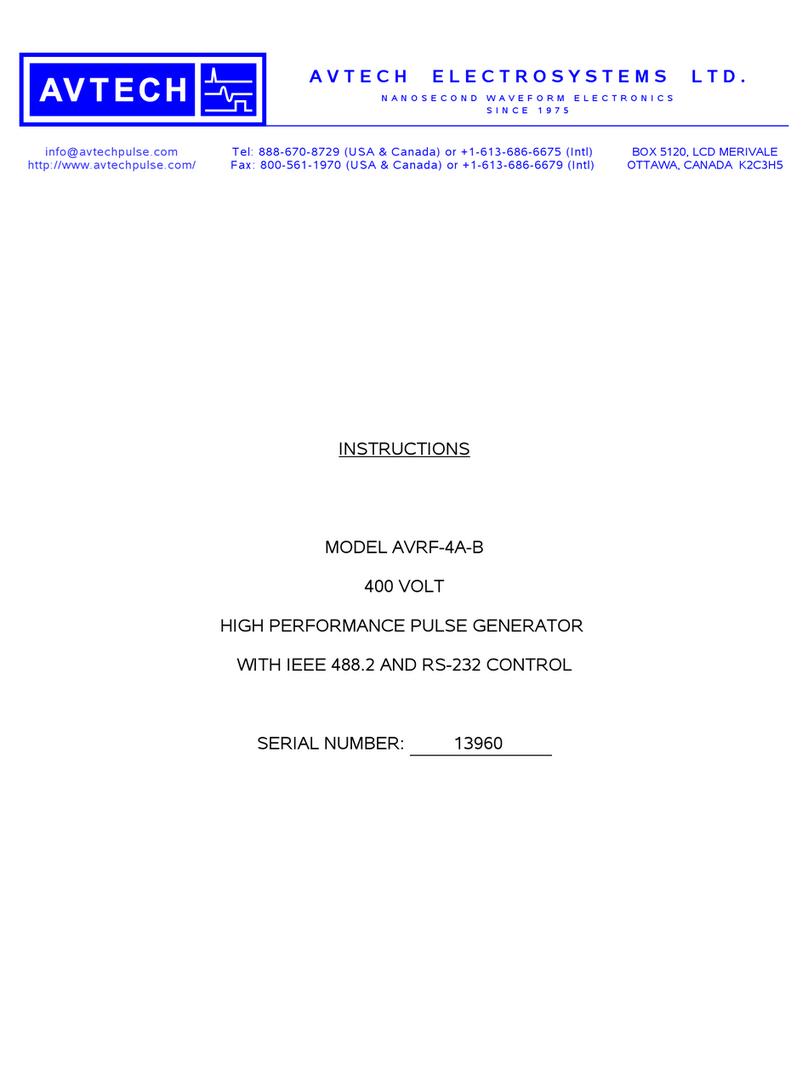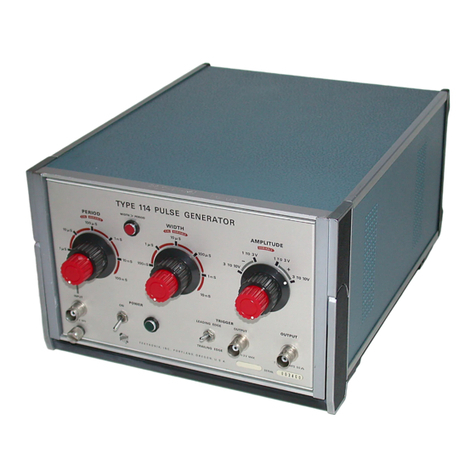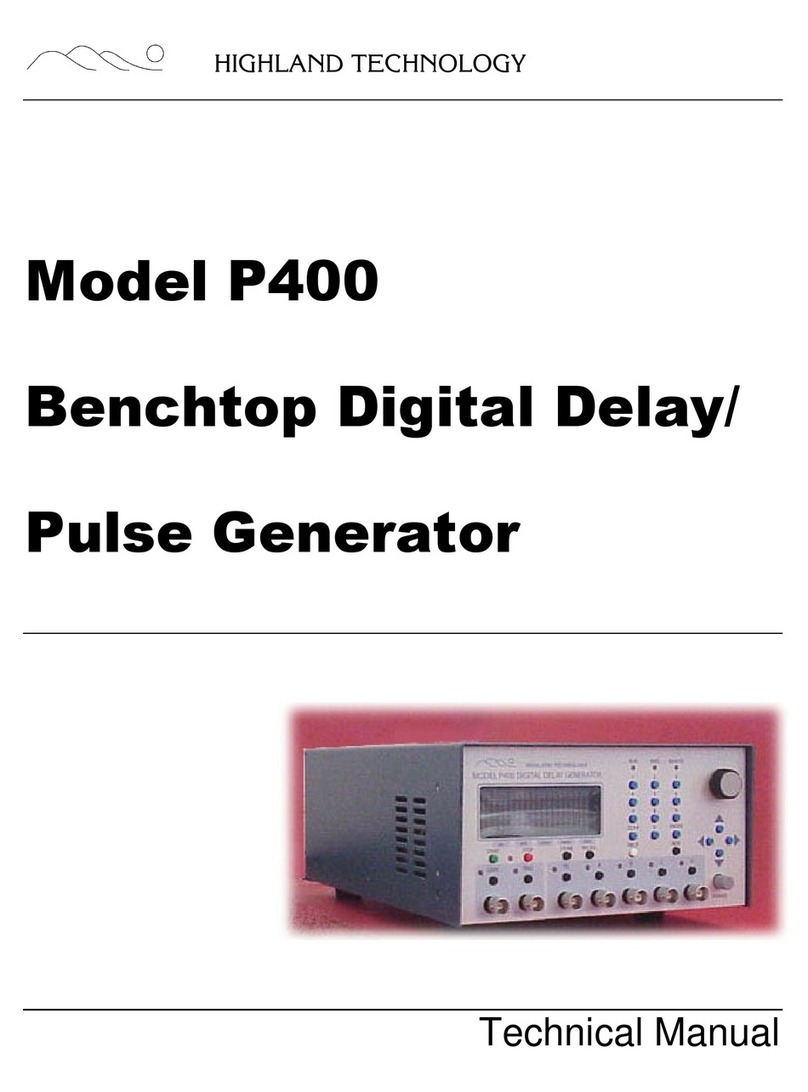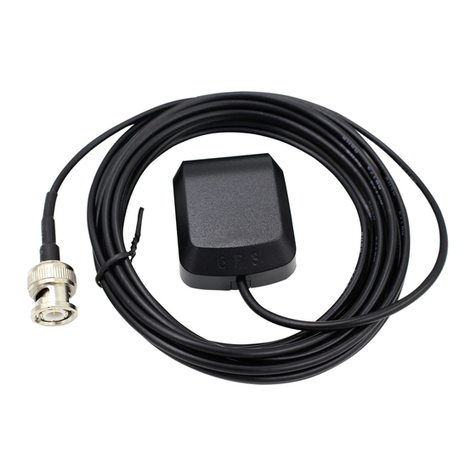
QUICK START –INTERNAL SINGLE SHOT GENERATOR OPERATION ......................................................9-23
Pulse Width, Delay...........................................................................................................................9-23
Amplitude.........................................................................................................................................9-23
Enable..............................................................................................................................................9-23
Interlock........................................................................................................................................... 9-23
Wait for Charge ...............................................................................................................................9-23
ARM Key Switch ..............................................................................................................................9-23
Start..................................................................................................................................................9-23
QUICK START –SINGLE SHOT EXTERNAL TRIGGER OPERATION...........................................................9-24
Trig ..................................................................................................................................................9-24
Level................................................................................................................................................. 9-24
Edge................................................................................................................................................. 9-24
Filter ................................................................................................................................................9-24
Source..............................................................................................................................................9-24
Pulse Width, Delay...........................................................................................................................9-24
Amplitude.........................................................................................................................................9-24
Enable..............................................................................................................................................9-24
Interlock........................................................................................................................................... 9-24
Wait for Charge ...............................................................................................................................9-25
ARM Key Switch ..............................................................................................................................9-25
Start..................................................................................................................................................9-25
STANDARD OPERATION MODES ............................................................................................................ 9-25
System Pulse Generation Overview.................................................................................................9-25
Single Shot Mode (Trigger Disabled)..............................................................................................9-25
Burst Mode (Trigger Disabled)........................................................................................................9-25
External Input Overview..................................................................................................................9-26
Single Shot Mode (Trigger Enabled)...............................................................................................9-27
SPECIAL TESTING MODES......................................................................................................................9-27
Pre Pulse Resistance Testing...........................................................................................................9-27
Post Pulse Resistance Testing.......................................................................................................... 9-28
Testing Mode Error/Status Conditions ............................................................................................9-28
10 PROGRAMMING THE 9730 .........................................................................................................10-30
PERSONAL COMPUTER TO PULSE GENERATOR COMMUNICATION....................................................... 10-30
RS232 Interface Overview .............................................................................................................10-30
USB Interface Overview ................................................................................................................ 10-31
Ethernet Interface Overview.......................................................................................................... 10-32
PROGRAMMING COMMAND TYPES AND FORMAT ................................................................................10-32
Line Termination............................................................................................................................ 10-32
IEEE 488.2 Common Command Format....................................................................................... 10-33
SCPI Command Keywords............................................................................................................. 10-33
SCPI Keyword Separator............................................................................................................... 10-33
SCPI Optional Keywords............................................................................................................... 10-34
SCPI Parameter Types................................................................................................................... 10-34
Legacy Command Support............................................................................................................. 10-34
Error Codes ................................................................................................................................... 10-34
PROGRAMMING EXAMPLES ................................................................................................................. 10-35
Example 1:.....................................................................................................................................10-35
Example 2:.....................................................................................................................................10-35
9730 SCPI COMMAND SUMMARY....................................................................................................... 10-36
Instrument Commands................................................................................................................... 10-36
System Pulse Commands................................................................................................................ 10-37
Channel Commands....................................................................................................................... 10-38
Display Commands........................................................................................................................10-39
System Commands .........................................................................................................................10-39
IEEE 488.2 COMMON COMMANDS...................................................................................................... 10-40
